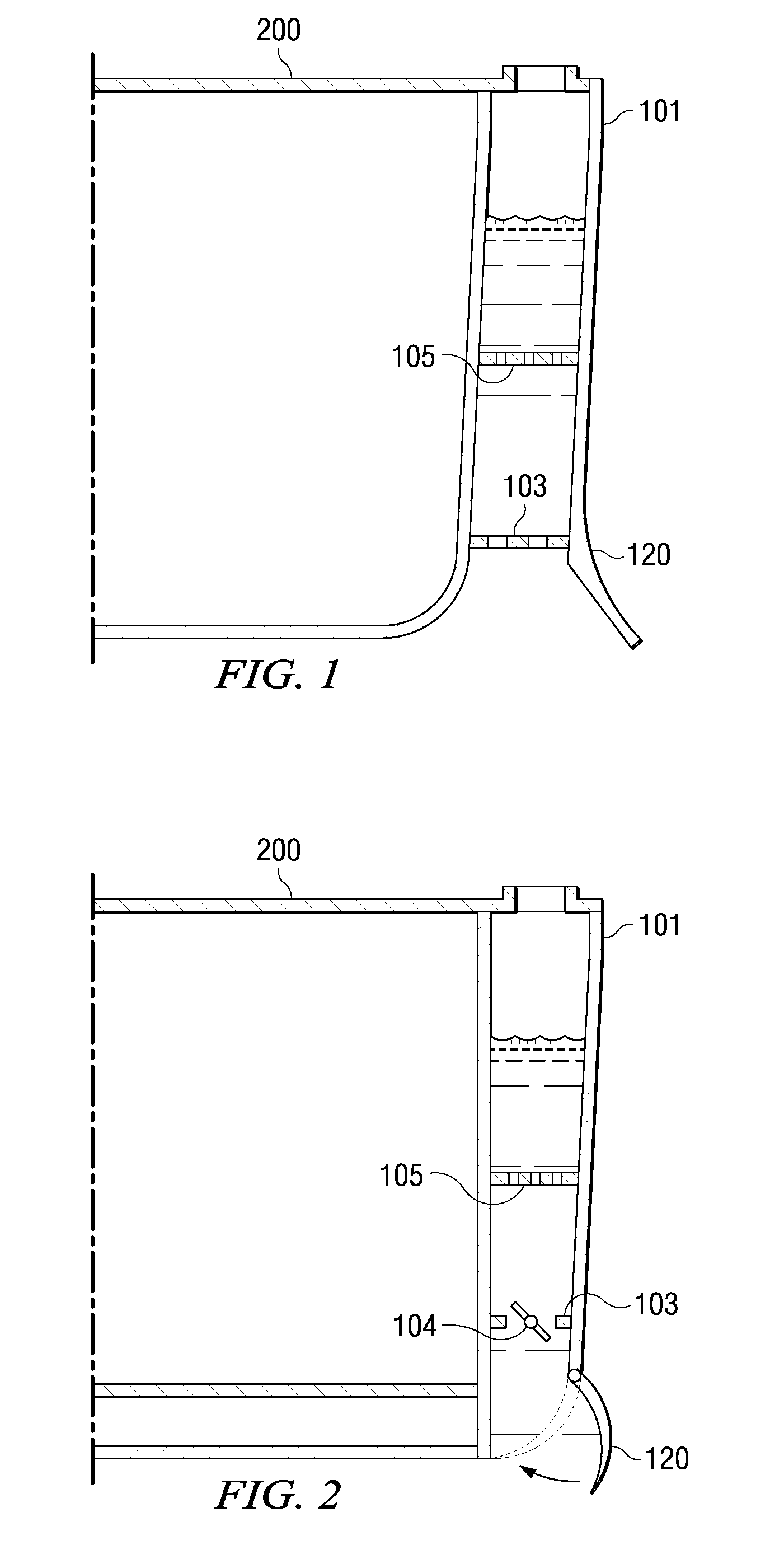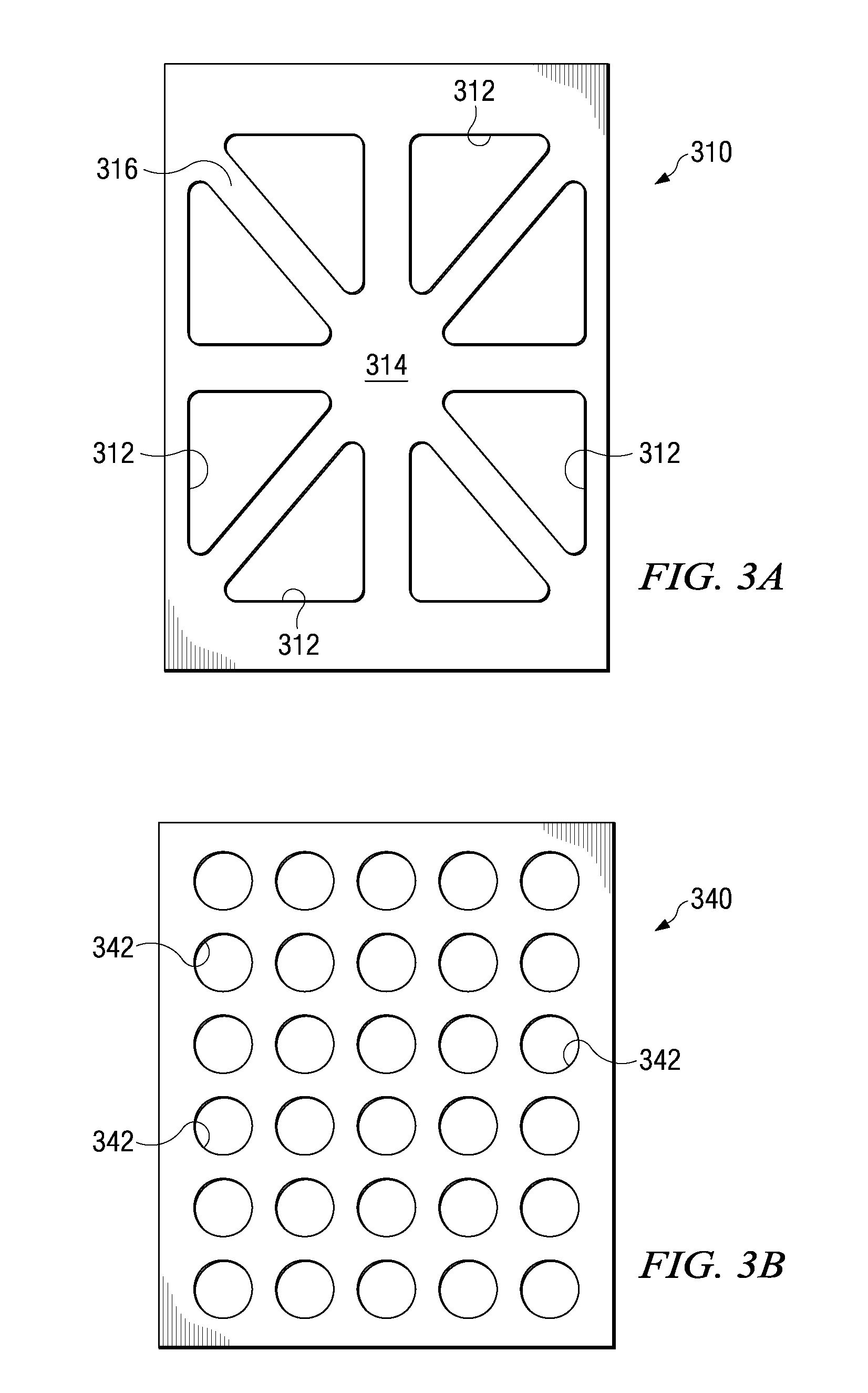Roll motion damping device for a floating body
a floating body and rolling motion technology, applied in the field of rolling motion damping devices for floating bodies, can solve the problems of increasing requiring increased power, so as to reduce the weight of the floating vessel, increase the viscous drag resistance, and reduce the effect of rolling motion
- Summary
- Abstract
- Description
- Claims
- Application Information
AI Technical Summary
Benefits of technology
Problems solved by technology
Method used
Image
Examples
Embodiment Construction
[0018]The disclosed embodiment shown in FIG. 1 represents half of a cross-section of a floating vessel 200 with both a sponson 101, including multiple internal baffles 103 and 105, and a wing keel 120. In operation, the other side of the floating vessel 200 would typically be a mirror image of that shown in FIG. 1, so that any anti-roll devices would operate in a complementary fashion on both sides of the vessel 200. In FIG. 1, sponson 101 is rigidly attached to the hull of the floating vessel 200. The sponson 101 is a relatively thin (with respect to the cross-sectional width of the vessel 200) projection that extends upward from the bottom of the vessel 200 to above the waterline. The sponson 101 is open on the bottom, allowing water to enter into the cavity formed by the sponson 101 next to the vessel's hull 200, and in the embodiment illustrated in FIG. 1, the top of the sponson 101 opens to atmosphere. In this particular embodiment, the sponson 101 would typically run approxima...
PUM
 Login to View More
Login to View More Abstract
Description
Claims
Application Information
 Login to View More
Login to View More - R&D
- Intellectual Property
- Life Sciences
- Materials
- Tech Scout
- Unparalleled Data Quality
- Higher Quality Content
- 60% Fewer Hallucinations
Browse by: Latest US Patents, China's latest patents, Technical Efficacy Thesaurus, Application Domain, Technology Topic, Popular Technical Reports.
© 2025 PatSnap. All rights reserved.Legal|Privacy policy|Modern Slavery Act Transparency Statement|Sitemap|About US| Contact US: help@patsnap.com



